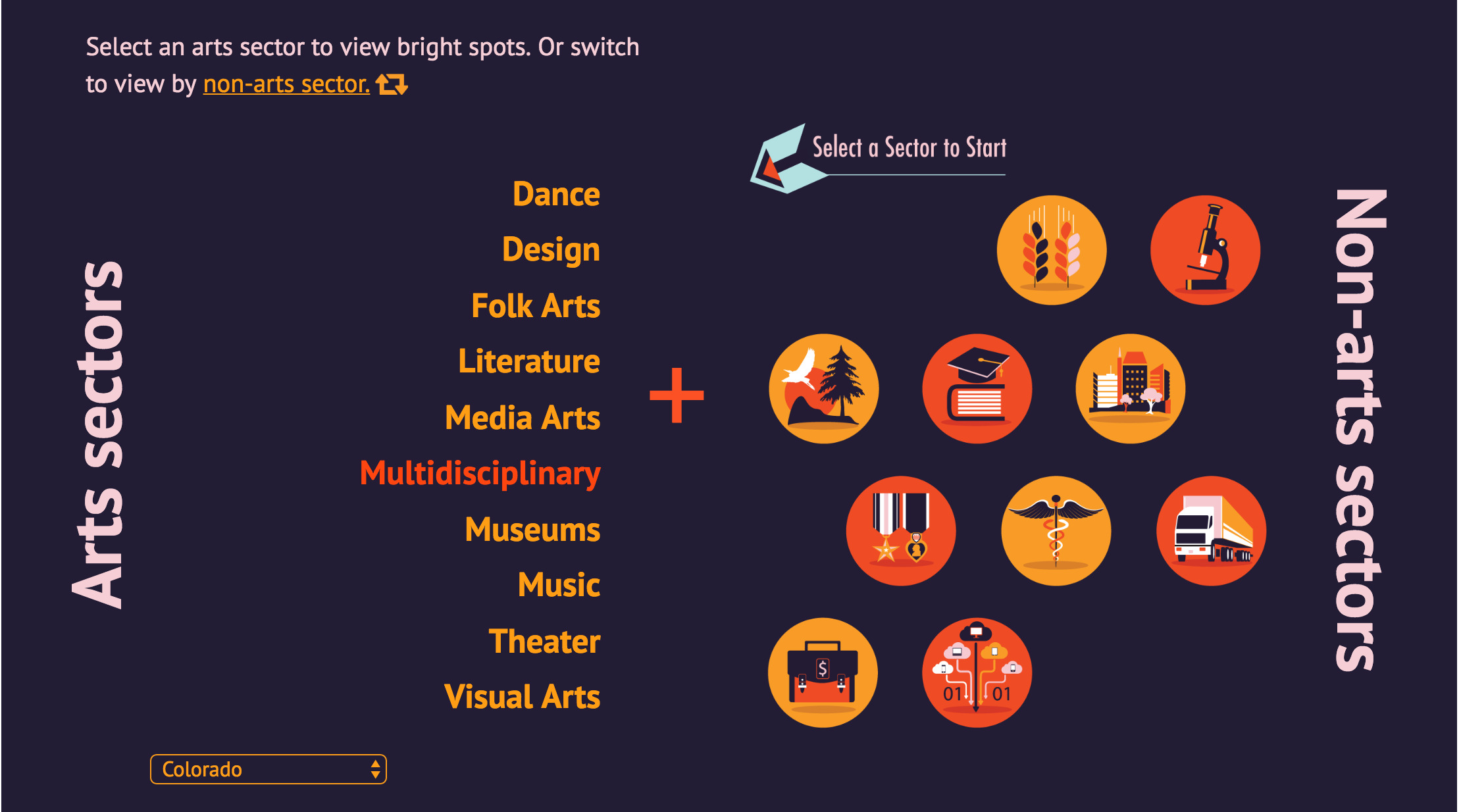In the early spring of 2016, 18F Acquisitions was approached by the National Endowment for the Arts (NEA) with a novel challenge. As part of its mission, NEA wanted to add interactive data visualizations to their existing website to highlight their work. After a brief discovery session, we agreed that a ghost writing engagement would best fit their needs. What surprised us at 18F, is that in just a few weeks time we were able to help NEA save over $150,000. This is a huge savings for such a short engagement, especially when the total cost of 18F’s effort was less than $1,000.
18F emphasizes the importance of human-centered design, agile development, and modular contracting in its work with agency partners. We also know that you can get a surprising amount of value from every single dollar.
Towards that end, we also approach agency clients with as much empathy as possible realizing that they’re dedicated, highly-skilled civil servants themselves. At NEA, we found an agency with a smart and strong acquisition strategy that already envisioned a phased, incremental approach; it also benefitted from being a fantastic use case that would result in an engaging and interactive experience with the public.
The problems that NEA did have were very typical of traditional government contracting, mainly that a purely paper-based exchange with vendors makes it difficult to fully address, or even consider, certain aspects of this kind of project. After a few hours with two 18F staffers, we provided feedback and thoughts about potential options to deal with some of the traditional hurdles.
Some of our approaches included:
-
Simplifying any instructions to any vendor(s) using lightweight performance work statements (PWS) like Statement of Objectives (SOOs)
-
Ensuring that any code the government buys using taxpayer dollars is open source per both 18F’s own policies and the Office of Management and Budget’s recent memo
-
Emphasize aesthetic consistency and human-centered design principles with modern standards (such as responsive design)
18F also recommended using experienced, available people who could do the type of modern development that makes a great digital experience for the public. NEA agreed and it prevented them from pursuing a different path that would have likely required substantially more time and money.
With a simple pivot and minimal effort, a good plan got even better. We were thrilled to be invited to help NEA and even more thrilled that we could help them succeed in a way that prevented years of back-and-forth exchanges and many millions of dollars spent. Instead, they invested $30,000 and a couple months to build the Bright Spots interactive graphic.

“We were challenged in finding the right way to visualize and display the Arts Ecosystem and the connection to other sectors. 18F helped to shape the focus of the query; pinpoint the best method to gain results; and the most efficient process to get site up and running. Without 18F consultation, we could have wasted time and money,” said Winona H. Varnon, Deputy Chairman for Management and Budget, National Endowment for the Arts.
One of the biggest barriers to getting digital services done in government is the habit of approaching the procurement process in the same way that you would for buying the types of things the government is used to buying. Modern web services are different and need to be approached differently in ways that favor showing not telling. These kinds of small engagements give agencies an opportunity to get a feel for the benefits of moving from requirements to working code. As this approach spreads through the government, agencies can expect to see better solutions, delivered faster, and the public can expect to see improved services that cost significantly less taxpayer money. We think that’s pretty cool for everyone.

